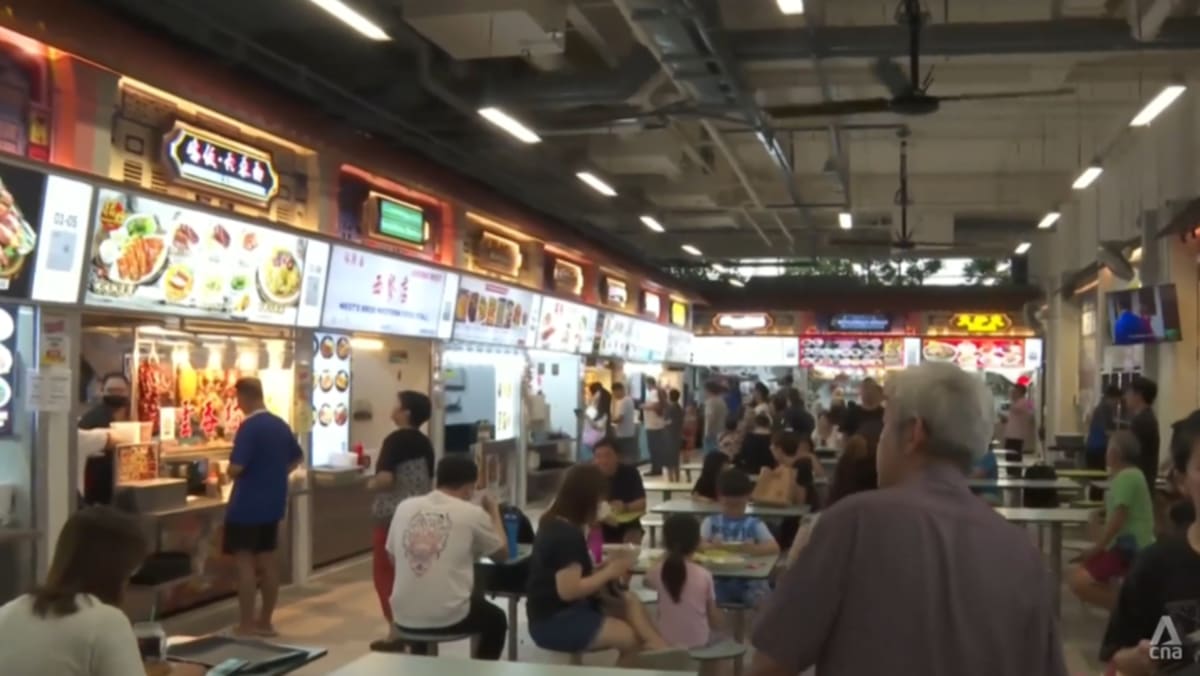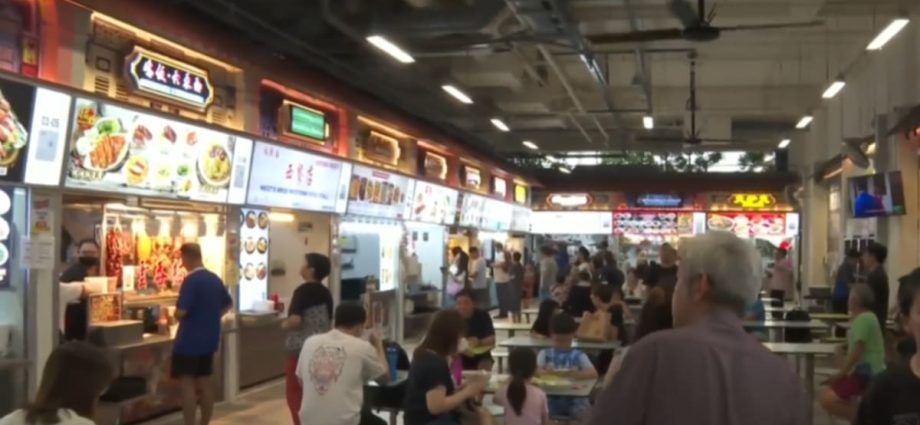
Among the top suggestions were for more food options, a better layout of the stalls and seats, as well as optimising both levels of the premises. The eatery previously occupied only the second floor.
There are now 39 stalls selling cooked food, up from 34 previously, while the number of seats has increased by more than 100 to almost 600.
Escalators and staircases were relocated from the front of the building, to free up space on the ground floor.
Parts of the carpark and loading bay on the first storey were also removed or relocated to make space for the stalls and dining area. However, this has reduced the number of parking lots on the premises.
Aside from giving diners more choices and space to enjoy their meals, the move has also improved the visibility of the hawker centre, making it more convenient for customers, according to the National Environment Agency (NEA).
Mr Lee, who visited the hawker centre during a soft launch last month, said in a Facebook post that food choices include wanton mee, nasi padang, economy rice, prawn noodle, prata, pizza, minjiang kueh, grilled fish and bubble tea.
The centre has a mix of veteran food sellers and rookies. The latter are supported by the NEA’s Incubation Stall Programme (ISP), which provides subsidised rental rates for 15 months, stalls pre-fitted with basic equipment to lower upfront costs of setting up, as well as initiatives for vendors to learn the ropes of being a hawker.
CENTRALISED PROCUREMENT
For the stallowners, the new management is also offering options such as a centralised procurement system to make it easier to stock their kitchens.
First-time hawker Noor Aisha Mohamed Ibrahim, who runs the Al Nadhira Indian Muslim Food stall, is among seven vendors involved in such an arrangement to re-supply ingredients and equipment.
“When we have missing bowls, or anything that we need urgently, we don’t need to find them (ourselves). We just message (those managing the network) in the group chat. They are very immediate in their service, and then they will just help us solve the issues very fast,” she said.
Mr Erik Wang, CEO of Chang Cheng Mee Wah Food Industries, the operator’s parent company, said centralised procurement also helps stallowners save on costs, which he hopes can translate into more affordable food for consumers.
“We know that raw material is one of the largest cost components for the hawkers,” he said. “So if they are able to get cheaper and more convenient sources of inputs, they will be able to sustain their business longer. And hopefully, they can also share that benefit – the lower costs – with the consumers.”
Mr Lee said the centralised system is one way operators can support both stallholders and residents.
“These are ways in which commercial operators add value, help to improve competitiveness and choice, and in return, also provide greater affordability for residents. These are ideas that we need to study more carefully, to see whether there can be a wider application,” he said.

